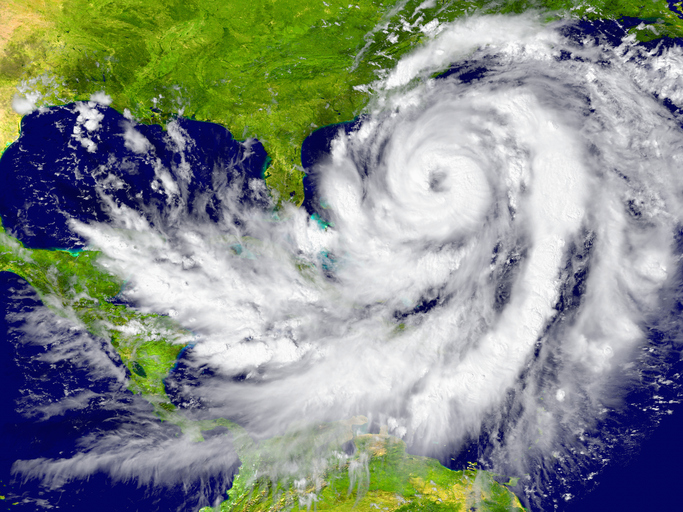The forecast calls for a hurricane season that falls short of the most active on record, which occurred in 2020 and featured 30 named storms. Nonetheless, it would be the seventh consecutive above-average year on record, according to NOAA Administrator Rick Spinrad.
Warm seasonal sea-surface temperatures in the Atlantic Ocean and Caribbean Sea are expected to contribute to activity this season, which runs from June 1 to November 30. Typically, after August 1, 90 percent of storms in the region occur.
An average Atlantic hurricane season—defined by NOAA as storm frequency averaged between 1991 and 2020—produces 14 named storms, seven hurricanes, and three major hurricanes.
Tropical storms are named by NOAA when their winds reach 39 miles per hour or higher. Hurricanes are storms with winds of 74 miles per hour or greater. The strongest of these, with winds of at least 111 miles per hour, are designated as major hurricanes.
NOAA's calculations take into account millions of data points collected over months, according to Matthew Rosencrans, the agency's seasonal hurricane outlook lead. Surface sea temperatures collected by buoys, atmospheric temperature measurements taken by weather balloons, and humidity levels measured by satellites are examples of these.
NOAA also takes into account the impact of global weather and climate patterns. An intense monsoon season, for example, off the coast of West Africa creates ideal conditions for storms to form in the Atlantic. In addition, the El Nio-Southern Oscillation, which causes alternating "El Nio" heating and "La Nia" cooling conditions in the Pacific, influences how many storms form.
The current cool La Nia Pacific conditions, which are associated with more active hurricane years, and a strong west African monsoon season, according to the agency, are key factors influencing the activity of this year's hurricane season.
In April, a team from Colorado State University made a similar prediction, predicting 19 named storms for the season. The team expects nine of them to become hurricanes, with four likely to intensify further to major hurricane strength.
According to scientists from the United Nations Intergovernmental Panel on Climate Change, as well as NOAA and other national monitoring agencies, climate change is amplifying hurricanes. Heat-trapping greenhouse gases warm the atmosphere, which warms the ocean. Warmer ocean temperatures fuel more powerful and destructive storms, resulting in higher storm surge and more rain.
SHARE YOUR IDEAS
Are you preparing for the hurricane season this year? Participate in the discussion below.
The annual global sea-surface temperature in 2020 was 0.76 degrees Celsius higher than the 20th century average, or 1.37 degrees Fahrenheit.
"One of the clear indicators of climate-change impact on hurricanes is really coming through changes in rainfall," said Kevin Reed, associate dean for research at Stony Brook University's School of Marine and Atmospheric Sciences, who studies climate and extreme weather events.
An April study published in the journal Nature Communications co-written by Dr. Reed, shows Atlantic storms dumped 10% more rain over hourly intervals during the record-breaking 2020 season than they would have in the absence of climate change.
According to a December 2017 study published in Environmental Research Letters that examined the warming climate's contribution to Hurricane Harvey, which inundated parts of Texas with more than 50 inches of rain, the event was 15% wetter than it would have been without climate change effects.
A January study published in the journal Nature Geoscience indicates that rising global temperatures may be shifting tropical storm paths poleward. The study discovered that temperate regions that have only seen a few hurricanes are more likely to see them more frequently.
NOAA advises residents in high-risk areas to check state emergency websites to see if they live in an evacuation zone, plan multiple evacuation routes, and stock up on basic supplies such as gasoline, food and water, and medications. The agency also suggests that homeowners keep their insurance policies up to date and that their homes meet hurricane code.
"Take those actions right now," Mr. Rosencrans instructed.














